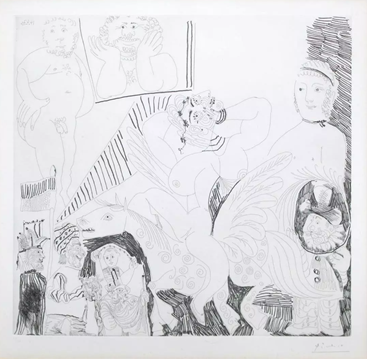Pablo Picasso
As a significant influence on 20th-century art, Pablo Picasso was an innovative artist who experimented and innovated during his 92-plus years on earth. He was not only a master painter but also a sculptor, printmaker, ceramics artist, etching artist and writer. His work matured from the naturalism of his childhood through Cubism, Surrealism and beyond, shaping the direction of modern and contemporary art through the decades. Picasso lived through two World Wars, sired four children, appeared in films and wrote poetry. He died in 1973.
Although he lived the majority of his adult years in France, Picasso was a Spaniard by birth. Hailing from the town of Málaga in Andalusia, Spain, he was the first-born of Don José Ruiz y Blasco and María Picasso y López. He was raised as a Catholic, but in his later life would declare himself an atheist.
Pablo Picasso's father was an artist in his own right, earning a living painting birds and other game animals. He also taught art classes and curated the local museum. Don José Ruiz y Blasco began schooling his son in drawing and oil painting when the boy was seven, and he found the young Pablo to be an apt pupil.
Picasso attended the School of Fine Arts in Barcelona, where his father taught, at 13 years of age. In 1897, Picasso began his studies at Madrid's Real Academia de Bellas Artes de San Fernando, which was Spain's top art academy at the time. Picasso attended only briefly, preferring to roam the art exhibits at the Prado, studying paintings of Rembrandt, El Greco, Francisco Goya, and Diego Veláquez.
During this nascent period of Picasso's life, he painted portraits, such as his sister Lola's First Communion. As the 19th century drew to a close, elements of Symbolism and his own interpretation of Modernism began to be apparent in his stylized landscapes.






Year of Work: 1962
Dimensions: 15 1/2in. by 11 1/2in.
Edition: Numbered 60 from the rare limited edition of 150
Medium: Original lithograph on paper
Condition: Excellent
Signature Details: Hand signed by Picasso